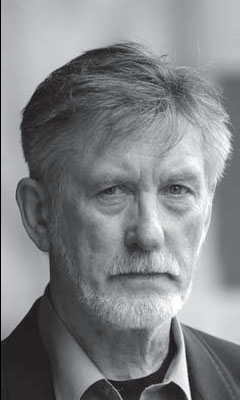|

photo: Dmitry Matveyev
|
Osvaldas Balakauskas presents technological comments upon his new symphonic poem that was commissioned by the Lithuanian National Philharmonic Society for his monographic 70th anniversary concert at the National Philharmonic Hall in Vilnius on December 8th. The world premiere of the symphonic poem
Tetra, along with his
Symphony No. 4 and the Piano Concerto
Sonata of the Mountains, will be performed by his long-time collaborators–the Lithuanian National Symphony Orchestra, its artistic director and chief conductor Juozas Domarkas, and pianist Petras Geniušas.
In composing Tetra, the composer remains an advocate for the purity of music, guided only by the objective criteria and retaining an unswerving conviction that music begins with the first sound of the piece, rather than the score’s cover or title page, and ends with the last chord, not with commentaries or evaluations of any kind. “Should we tear off the covers from all scores and play them without knowing the title or the composer’s name–this would not have the slightest effect upon music. It appears to be self-evident, and yet there is so much written about the ‘covers’,”–claimed Osvaldas Balakauskas more than twenty years ago. By naming his new work Tetra the composer likewise dispenses with all kinds of descriptions other than merely technological, as does his symphonic poem, which eventually escapes the very definition of the genre.
Balakauskas says that he chose the symphonic poem ‘label’ because of its indefinite formal and genre properties, which he deployed as a form of camouflage. The title Tetra (gr. four) “stands for the four-voice counterpoint (two tones against two tones) used in the piece, which is freely complemented (decorated) with other textures,”–comments the composer.
The key aspect of the resulting composition is the harmony that typically forms a specific sound environment (characteristic of Balakauskas), in which the dominant-related complexes of sounds, rich and thick chords, and consonant and paratonal harmonies prevail. The governing principle of such harmony is tonal serialism (a term coined by Balakauskas himself): following this pridnciple, the composer forms harmonic progressions acting as a backbone of the entire composition, and later adds various nuances to conceal or highlight the underlying structure by means of orchestration. The harmonic progressions and their combinations picked through improvisation are similar to the harmonic writing of Alexander Scriabin.
Contending that eclecticism is a sign of weakness, Balakauskas conjures a solid and indivisible symphonic monolith. He refers to his Tetra as “a certain kind of variations,” in which he abstains from using a lot of diverse material, opting for a few basic patterns instead.
Rhythm has always been yet another area of Balakauskas’ major concerns, in which he continuously strived to derange the system of binary partition and shape a different substitute of tangible rhythmic structure. In Tetra, he characteristically combines ‘capricious’ rhythmic progressions, successions of uneven values, and motoric movement. Many tend to associate these characteristics with the influences coming from jazz, but Osvaldas Balakauskas regards it as a matter of misunderstanding and misinterpretation: “I like rhythmic progressions that derive from the ideas characteristic of academic music, but musicologists immediately identify this as jazz. Surely, such progressions do trigger strong associations with this music, but there is no direct connection.”
Osvaldas Balakauskas claims that the symphonic poem Tetra will not stand out too much in the context of his Fourth and Fifth symphonies, since its structure, style and harmony have certain connections to those. As if summarising the technological comments and willing to declare his creative attitudes once again, the composer states: “I do not reject melody, rhythm or harmony, which the avant-garde insistently destroys. I no longer want to be an avantgardist, it does not interest me anymore.”
© Asta Pakarklytė
Lithuanian Music Link No. 15

